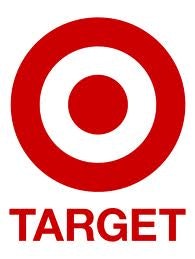
Big
Wal-Mart Stores, Inc. (NYSE:WMT) has over 4,000 stores across The United States, with another 6,100 plus international locations. Add in the more than 600 Sam’s Club discount stores the company operates and it is quickly obvious that Wal-Mart is a giant company. Target, Wal-Mart’s main competitor in the U.S. market, has a little under 1,800 stores, total.
Based on the store counts, Wal-Mart Stores, Inc. (NYSE:WMT)’s U.S. business is about twice the size of Target’s. However, looking at the top line changes that math a little bit. While target’s revenue in 2012 was an impressively large $73.3 billion, Wal-Mart’s U.S. operations pulled in $274.5 billion. Almost four times as much.
Size Matters
Wal-Mart’s size gives it notable clout over its suppliers. It uses this to squeeze out price concessions that it passes on to its customer. Indeed, it’s entire business is about “everyday low prices.” Clearly, competing with Wal-Mart on price is hard to do.
However, Target Corporation (NYSE:TGT)’s business, at nearly $75 billion in sales, isn’t exactly undesirable either. So the benefit Wal-Mart has over its main competitor in this regard isn’t as big a differentiator as it would be against a smaller company or an independent mom and pop store.
Moreover, it only takes a little simple math to discern that Wal-Mart Stores, Inc. (NYSE:WMT) needs larger numbers to move the revenue and earnings needles. With a top line of $274.5 billion, $1 billion dollars becomes an acceptable rounding error. And that’s just the U.S. business.
Whatever the company does, it has to do on a grand scale. Like buying entire companies when it enters foreign markets, such as its $2.4 billion purchase of a controlling stake in South Africa’s Massmart. While Target is a large company on virtually every metric, it still has plenty of room to grow before reaching that scale. In that is opportunity.
Foreign Sales
One of the biggest differences between the two companies is in their respective foreign sales. Wal-Mart Stores, Inc. (NYSE:WMT)’s top line in its foreign operations came in at $135.2 Billion in 2012. Target Corporation (NYSE:TGT)’s foreign operations accounted for roughly zero dollars. While Wal-Mart’s foreign operations provide valuable diversification, the fact that Target is only just moving into Canada this year means that it likely has years of international expansion ahead.
This is a big reason to like Target over Wal-Mart. There is a clear risk that competitors establish themselves in foreign markets before Target even gets there, making expansion abroad far more difficult. However, Target has been capably taking on Wal-Mart in the mature U.S. market for decades. That’s a good reason to believe it can compete effectively abroad, even in tough markets.
Differentiation
One of the key reasons that Target has been able to grow so strongly over the years is its focus on the customer experience. It makes shopping in its stores hip and cool, compared to Wal-Mart’s functional but not particularly appealing stores. As long as Target Corporation (NYSE:TGT) can keep its hip image it should be able to differentiate itself enough to squeeze into new markets.
Interestingly, Costco Wholesale Corporation (NASDAQ:COST), which competes with Wal-Mart’s Sam’s Club, also effectively uses customer experience to take on the giant retailer. While that may not seem possible in a club store format, it pays particular attention to its employees. Happy employees translates into happier customers. I personally switched to Costco for this very reason. Employee relations have never been a strong suit for Wal-Mart Stores, Inc. (NYSE:WMT).
Making Money
Also, Wal-Mart, focused on low prices, simply doesn’t turn as much of the top line into results on the bottom line as its main competitor. In fact, Target Corporation (NYSE:TGT)’s gross margin, its sales minus its cost of goods divided by sales, is notably higher than Wal-Mart’s. Its operating margin, operating earnings divided by revenues, is generally higher, too.
This isn’t surprising based on the more varied businesses contained inside of Wal-Mart. For example, Costco’s gross margin and operating margin are less than half of Target’s margins. Since Sam’s Club is part of Wal-Mart’s overall mix, results can’t help but be dragged down.
A Better Wal-Mart?
Conservative investors looking to collect a growing dividend stream from an industry leader would do well to consider Wal-Mart. It offers sales channel and international diversification on a scale not available in any other single company, and it is financially strong.
Investors looking for a large cap growth company, however, would be better served with Target. It looks to have many more years of expansion ahead as it, too, reaches into foreign markets.
That said, pairing Target Corporation (NYSE:TGT) with Costco would be an interesting way to create a more nimble Wal-Mart Stores, Inc. (NYSE:WMT) like holding. That combination would still have years of expansion ahead, but provide the channel diversification that Target alone lacks.
The article Targeting A Company With Longer Legs originally appeared on Fool.com and is written by Reuben Gregg Brewer.
Copyright © 1995 – 2013 The Motley Fool, LLC. All rights reserved. The Motley Fool has a disclosure policy.
